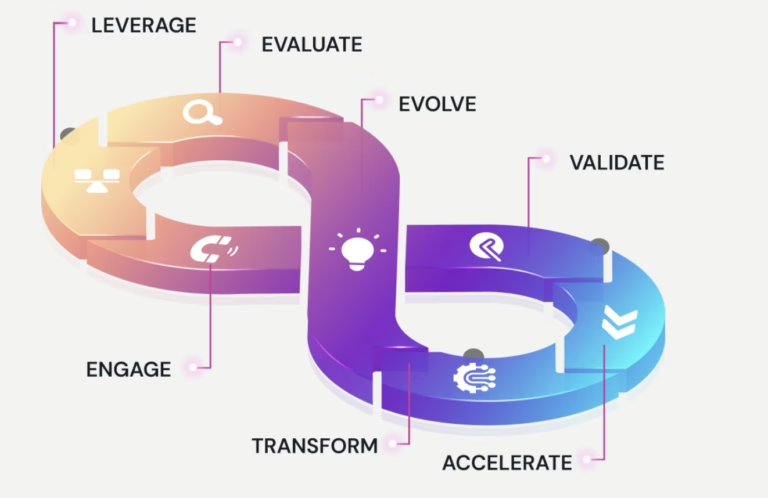If you’re reading this, chances are your organization is gearing up for CSRD compliance, or maybe you’re just starting to think about it. Don’t worry – you’re not alone! Achieving sustainability reporting can feel overwhelming, but the good news is that it doesn’t have to be. The first step towards a smooth CSRD journey is conducting a Gap Analysis, and we’re here to break it down for you, step by step.
Think of a Gap Analysis as a roadmap for your sustainability journey. It’s all about identifying where your organization is today and figuring out what’s needed to reach CSRD compliance. Whether you’re already on the right path or just beginning to explore, this guide will give you the clarity and tools you need to stay ahead. Ready to make sure your sustainability practices are up to par? Let’s get started!
Step-by-Step Guide to Conducting a Gap Analysis for CSRD
Step 1: Gather Essential Data and Stakeholders
The first step in conducting a Gap Analysis is gathering essential data and engaging key stakeholders. Before beginning the analysis, ensure you understand the CSRD requirements and your organization’s current reporting framework.
- Identify Key Data Points: Determine the specific data required for CSRD compliance, including environmental metrics, social performance indicators, and governance practices.
- Assemble Stakeholders: Involve representatives from departments like sustainability, finance, HR, and IT. External advisors or consultants with expertise in CSRD can also provide valuable insights.
- Collect Existing Reports: Compile previous sustainability reports, ESG data, and other relevant documentation for review.
Step 2: Evaluate Your Current Reporting Practices
Actively access the strengths and weaknesses of your sustainability reporting framework. Compare your existing practices directly against established frameworks like the Global Reporting Initiative (GRI) or the Sustainability Accounting Standards Board (SASB).
Check your data collection processes for completeness, accuracy, and consistency, ensuring they meet the required standards. Review how effectively you manage and report this data, identifying any gaps or inconsistencies. Examine your governance structures closely by evaluating roles, responsibilities, and oversight mechanisms involved in sustainability reporting.
Ensure your team actively aligns their tasks with compliance requirements and maintains accountability at every level. By addressing these areas, you create a clear baseline for advancing toward CSRD compliance.
Step 3: Identify Gaps
Compare your current practices with CSRD requirements. Focus on data gaps by spotting missing information or areas needing quality improvement—do you have complete details on Scope 1, 2, and 3 emissions?
Examine process gaps by uncovering inefficiencies or mismatches in data collection, validation, and reporting workflows. Check for policy gaps by assessing if your internal policies align with CSRD’s governance and accountability standards. Stay proactive, analyze each area critically, and pinpoint precisely where your practices fall short.
Addressing these discrepancies ensures your organization is on the right path to full compliance.
Step 4: Develop an Action Plan
With a clear understanding of the gaps, create a roadmap to address them.
- Set Priorities: Focus on high-impact areas that are critical for compliance, such as emissions reporting or governance updates.
- Assign Responsibilities: Clearly define roles and responsibilities for implementing the action plan across departments.
- Establish Timelines: Set realistic deadlines to ensure timely progress while meeting reporting deadlines.
Step 5: Engage Stakeholders
Engage stakeholders actively to ensure successful sustainability reporting. Collaborate with internal teams across departments to align efforts, maintain consistency, and streamline data collection and reporting processes. Work closely with your finance, HR, and sustainability teams to ensure everyone is on the same page and contributing effectively.
Build external partnerships with consultants, auditors, and software providers who bring valuable expertise and tools to the table. Leverage their knowledge to refine your approach, address gaps, and ensure compliance with CSRD standards. Keep communication open and continuous, fostering accountability and alignment at every stage of the reporting process for seamless execution.
Step 6: Leverage Digital Tools
Leverage digital tools to simplify and enhance your Gap Analysis process. Centralize data management by using platforms that seamlessly consolidate data collection, validation, and reporting. Track your progress in real-time through interactive dashboards, ensuring you stay on top of closing gaps and achieving compliance.
Go further with advanced analytics to identify emerging trends, predict potential gaps, and allocate resources efficiently. Let these tools empower your team to act swiftly and make informed decisions, transforming a complex compliance journey into a streamlined and proactive strategy for CSRD readiness. Embrace technology to turn challenges into opportunities.
Step 7: Monitor Progress and Refine
Monitor your progress and refine your approach regularly because Gap Analysis isn’t a one-time task. Actively track the implementation of action items using project management tools to ensure steady progress.
Conduct follow-up reviews periodically to identify and address any new gaps or inefficiencies in your reporting practices. Stay proactive by adapting to updates in CSRD guidelines and emerging sustainability trends. Continuously engage your teams to align efforts and ensure everyone remains on track.
By actively monitoring and refining your strategy, you’ll not only maintain compliance but also enhance your sustainability practices, keeping your organization prepared for future challenges and opportunities.
Common Challenges in Gap Analysis and How to Overcome Them
1. Data fragmentation can seriously hinder your efforts. When information is dispersed across various departments, accessing and analyzing it becomes a challenge. To overcome this, it is essential to implement integrated data management systems that centralize all sustainability-related data. This approach streamlines processes, improves data accuracy, and enhances accessibility. By eliminating data fragmentation, your teams will have a unified, efficient view of sustainability data, making it easier to track progress and ensure compliance.
2. Understanding and interpreting CSRD guidelines can feel overwhelming, but don’t worry – you don’t have to do it alone. Partner with sustainability consultants who can help break down complex requirements and tailor solutions to your needs. Additionally, invest in training programs to build internal expertise within your team. By equipping your employees with the proper knowledge and guidance, you’ll ensure a smoother compliance process and empower them to navigate the intricacies of CSRD with confidence.
3. Resource constraints can be a significant challenge, especially when time, budget, or personnel are limited. To overcome this, focus on the most critical areas first. Allocate resources efficiently to ensure that key aspects of the Gap Analysis are addressed. For tasks that are outside your core competencies, consider outsourcing to experts. This way, you can maintain momentum, ensure accuracy, and meet CSRD requirements without spreading your team too thin.
Benefits of Conducting a Thorough Gap Analysis
Conducting a thorough Gap Analysis brings several key benefits to your organization:
- It ensures improved compliance by systematically addressing gaps and aligning your practices with regulatory requirements, minimizing the risk of non-compliance. It also enhances efficiency by streamlining your reporting processes, saving both time and resources. With a more organized approach, you can avoid unnecessary delays and costs, making your reporting efforts more effective.
- Gap Analysis helps you build trust with stakeholders. Transparent, accurate reporting boosts your credibility with investors, customers, and regulators, showing them that your organization is committed to sustainable and responsible practices.
- A comprehensive Gap Analysis leads to better strategic alignment.
By identifying areas for improvement, you ensure your sustainability practices align with your business goals, driving long-term growth and resilience. Hence, it’s a crucial step that supports compliance, operational efficiency, trust, and strategic success.
How 47Billion Can Help with CSRD Compliance
At 47Billion, we understand that conducting a Gap Analysis requires both expertise and a strategic approach. That’s why we provide customized solutions to streamline your CSRD reporting journey.
Our ESG Solutions are designed to make compliance seamless, covering everything from data collection to detailed reporting. We also offer Sustainability Advisory Services, where our team provides actionable insights to help you address gaps and build a strong, sustainable framework that aligns with CSRD.
We don’t just provide solutions; we also offer End-to-End Support. Our experts will guide you through every step of the Gap Analysis process, ensuring a smooth and efficient transition to full CSRD compliance.
With 47Billion by your side, you’ll simplify the complexities of sustainability reporting and make compliance a competitive advantage. Ready to take your CSRD journey to the next level? Contact us today, and let’s work together to turn your sustainability goals into measurable success.







